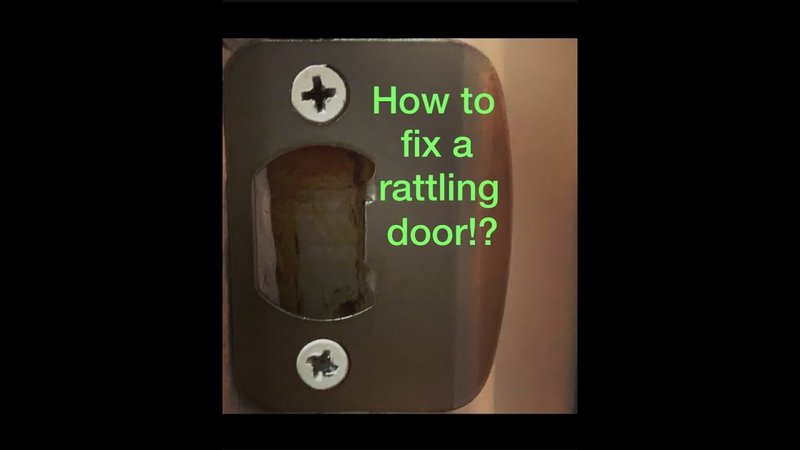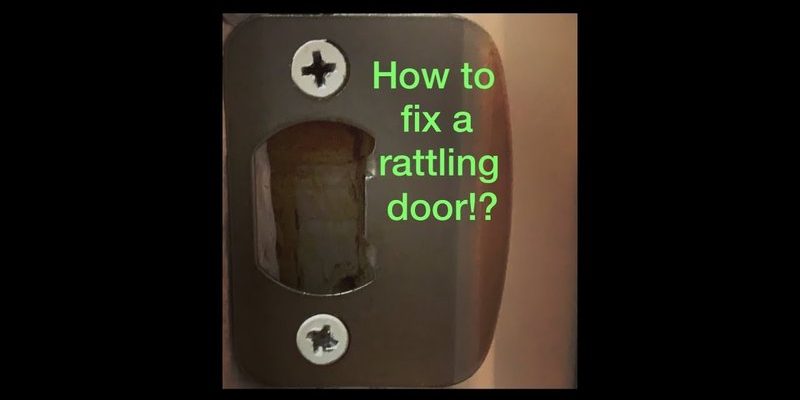
Kick plates are there to protect the lower portion of your door from scuffs, dirt, and everything shoes tend to drag in. They’re simple, sturdy, and honestly—practically invisible until they start making noise. So why does this harmless metal plate turn into the world’s smallest percussion instrument whenever you shut the door? Let’s break down how this happens, what’s really going on, and (most importantly) what you can do about it.
What Is a Kick Plate and Why Does It Matter?
You might not think much about your door’s kick plate—that shiny metal, brass, or even plastic strip bolted to the bottom of your front entrance. But let me explain: it’s a bit like armor for your door. The kick plate’s job is to take all the kicks, bumps, and dirt so the door itself stays looking sharp. You’ll find them on all kinds of doors, from wood-paneled exteriors to modern steel or even glass entries.
But here’s the thing: even though kick plates are sturdy, they’re usually attached with just a few screws. If those screws get loose or the plate warps, that “armor” turns into a source of rattling every time the door moves. And it’s not just about the noise—if left unchecked, a loose kick plate can scratch the door, trap debris, or even cause tripping hazards near the threshold.
Think of brands like Kwikset and Schlage as examples. Their entry doors often come pre-installed with kick plates, but after years of weather, cleaning, or maybe a few too many soccer balls, those plates get knocked loose. Suddenly, you’ve got a mystery sound to troubleshoot.
Common Reasons Your Kick Plate Rattles
Honestly, if your kick plate is rattling, you’re in good (if slightly annoyed) company. There are a handful of reasons this happens, and most of them aren’t especially dire. Here’s what you’re likely dealing with:
- Loose screws: This is by far the most common culprit. Over time, screws can work themselves out—especially on doors that get a lot of slams, wind, or temperature swings.
- Warped plate: Metal plates (especially the thinner, more decorative types) can bend out of shape over time, especially if folks have kicked them a few times too many on the way in.
- Gap between plate and door: Sometimes there’s a slight gap left during installation, and that’s just enough for a rattle to sneak through.
- Missing or damaged screws: If a screw is gone or rusted out, you’ll get one side of the plate flapping with every shut of the door.
Each of these issues starts out small, but trust me—they can get worse if dust, water, or more force keeps working its way in.
How Does a Rattling Kick Plate Sound?
So, what does a rattling kick plate actually sound like? Picture shutting your door and hearing a sharp, metallic clank, or maybe a dull, rhythmic vibration right as the door hits the frame. Sometimes it’s a soft jingle, other times it’s more like a clattering coin in a tin can. The pitch and volume can change a bit based on the plate material—brass, stainless steel, painted steel, or aluminum all have their own “voice,” so to speak.
Here’s a little story: I once had a neighbor whose entry door made a tiny clang every time he came home late at night. The sound would echo down the hallway and wake up his dog—and his toddler. Turns out, the bottom kick plate was missing a screw. It took less than five minutes to fix, and they all (finally) got some sleep.
If you hear this sort of noise, don’t ignore it. That small sound means something’s loose, and it’ll only get more annoying. Besides, it’s a great excuse to grab a screwdriver and feel like a home repair hero.
How to Fix a Rattling Kick Plate on Your Door
Let’s get practical. If you’re tired of the rattling, you can usually get things sorted with a simple bit of troubleshooting and a few basic tools. Here’s what to do step by step:
- Check all the screws: Open the door wide and look at the kick plate from both sides. Wiggle the plate gently with your hand (careful not to scratch your knuckles on the door edge). If anything moves or seems loose, that’s your clue.
- Tighten screws: Grab the right screwdriver (most often a Phillips head) and tighten each screw just until snug. Don’t overdo it—if you strip the wood or metal, you’ll have a bigger problem!
- Replace missing screws: If you notice any gaps, missing screws, or giant holes, stop by the hardware store for replacements that match the plate. Most standard kick plates use
- Add padding if needed: Sometimes, even after tightening, there’s a slight gap or vibration. You can stick a thin pad (like a felt bumper or a sliver of weatherstripping) behind the plate right where it rattles. That stops the metal-on-door jingle instantly.
- Check for warping: If the plate looks bent or bowed, you might need to carefully remove it and reshape it on a flat surface. In the worst cases, replacing the plate is quicker and easier than wrestling with warped metal.
If you’re dealing with a fancier door—like one with decorative glass, security bolt cutouts, or extra wiring for alarms—be a bit more cautious. You don’t want to accidentally disconnect or damage anything else while you’re at it.
When Should You Replace Your Kick Plate?
You might be wondering if it’s time to ditch your old kick plate altogether. Here’s the thing: not every rattling plate needs to be replaced, but sometimes it’s the smarter move. If your kick plate is bent, rusted through, badly scratched, or simply and stubbornly refuses to sit tight even after you’ve tightened the screws, a new one will give you peace (and quiet).
Here are a few signs you really should replace your kick plate:
- Visible rust or corrosion: Metal plates near the ground get wet often. If yours is flaking or stained, a new plate is safer (and looks way better).
- Cracks or splits: A cracked plate can snag shoes, scratch pets, or just look awful.
- Repeated rattling: If you’ve tightened, padded, and fiddled with the plate but it keeps coming loose, the mounting points or the plate itself might be worn out.
- Upgrading for style: Sometimes you just want to swap out that old, dingy silver plate for a shiny new brass or black one. No shame in that!
Replacing a kick plate is usually a simple project. Most standard sizes fit most door brands—even if you’re switching from an old Schlage door to a new steel entryway. Just measure before you buy so you don’t end up with a plate that’s too long or tall.
Kick Plate Maintenance Tips to Prevent Future Rattling
Once your kick plate’s fixed, a little preventative maintenance keeps the noise (and the headaches) away. Here’s what I recommend for keeping things silent and secure:
- Check tightness regularly: Every six months or so, grab your screwdriver and give each screw a quick half-turn. It’s a tiny job but makes a big difference.
- Clean beneath the plate: Dirt, sand, and water can build up at the bottom of your door. Give it a wipe when you clean the entryway—this helps prevent rust and warping.
- Watch for damage: If you notice dents, scrapes, or rust, jump on repairs early before they get worse.
- Avoid slamming doors: Not only is this hard on the kick plate, it’s rough on the door, frame, hinges, and everything else. A little gentle treatment goes a long way.
Maintaining your kick plate is a tiny bit like changing your car’s oil: you rarely see immediate results, but you’ll definitely notice if you skip it for too long. A few minutes every now and then will spare you a lot of rattling in the future.
Comparing Kick Plate Solutions: Fix vs Replace
You might be torn between fixing that old rattling kick plate and just buying a new one. Here’s my take: if it’s just a loose screw or minor gap, fixing it is quick, cheap, and gives instant results. But if your kick plate is more “antique” than “vintage,” replacement wins out.
Here’s a quick comparison:
| Fix | Quick, cheap (maybe even free), requires only a screwdriver or a few replacement screws, minimal time investment. |
| Replace | Costs a bit more (usually $10–$30), takes 15–30 minutes, gives a fresh look, solves rust/warping issues for good. |
If you’re using a universal kick plate, most brands and home improvement stores carry a huge range of sizes and finishes, so matching your door’s style isn’t hard. If your door is a specialty brand or size (Kwikset, Schlage, or custom wood), double-check the measurements before you buy.
If you’re frustrated by a rattling kick plate, remember: it’s usually an easy fix. A few minutes of troubleshooting is all it takes to keep your door (and your nerves) quiet.
When to Call a Pro for Rattling Kick Plate Troubleshooting
Honestly, most rattling kick plates are a true DIY project. But if you’ve tried everything—tightening, padding, even swapping in a new plate—and the noise won’t go away, it might be time for backup. This happens sometimes on heavy commercial doors, fire-rated doors, or specialty brands with extra-thick hardware.
Here’s when it makes sense to call a handyman or door technician:
- Plate is attached with hidden fasteners or adhesive: Some high-end doors use glue instead of screws, and prying those off can damage the door.
- Door is unusually heavy or automated: If your door is connected to alarms, card readers, or auto-close systems, a pro should handle any disassembly.
- Underlying structural issues: If the door frame, sill, or lower section is damaged or rotten, fixing the kick plate won’t solve the real problem.
If you end up calling for help, just explain you’ve got a rattling kick plate, what you’ve tried so far, and the brand or type of door you have. This helps the pro show up with the right parts and tools.
Closing Thoughts: Peace and Quiet With a Secure Kick Plate
When a kick plate starts rattling every time you shut the door, it gets old fast. But the good news is most of these noises come from something minor—a loose screw or a tiny gap. With a few basics tools and a little patience, you can troubleshoot, tighten, or replace your kick plate and get back to that satisfying, silent door close.
Whether your door’s from Schlage, Kwikset, or another popular brand, these fixes work everywhere. A solid, secure kick plate keeps your door looking sharp and your entryway blissfully free of annoying noises. Sometimes, peace and quiet really do start at the front door.
